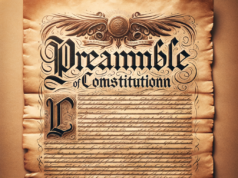Table of Contents
- 1 Understanding the Historical Context of Voting Rights in the United States
- 2 Current Legislative Challenges Facing Voting Rights Across the Nation
- 3 The Impact of Voter ID Laws on Marginalized Communities
- 4 Grassroots Movements: Mobilizing for Change in Voting Access
- 5 The Role of Technology in Safeguarding Electoral Integrity
- 6 Future Directions: Strategies for Protecting Voting Rights Moving Forward

The battle for voting rights in the United States has reached a critical juncture, with ongoing legislative challenges and grassroots movements striving to ensure equitable access to the ballot box. As the nation grapples with issues of disenfranchisement and voter suppression, understanding the historical context of voting rights, current challenges, and the role of technology becomes essential. This article delves into the complexities of the voting rights crisis, examining the impact of recent laws and the mobilization of communities advocating for change.
Understanding the Historical Context of Voting Rights in the United States
The struggle for voting rights in the United States has deep roots, tracing back to the founding of the nation. Initially, voting was predominantly reserved for white, land-owning men, effectively excluding women, people of color, and the economically disadvantaged. The passage of the 15th Amendment in 1870 aimed to prohibit racial discrimination in voting, yet systemic barriers persisted through Jim Crow laws, literacy tests, and poll taxes. The Civil Rights Movement of the 1960s marked a pivotal moment, culminating in the Voting Rights Act of 1965, which sought to dismantle these oppressive practices. However, the 2013 Supreme Court decision in Shelby County v. Holder, which invalidated key provisions of the Act, has reignited debates over voter suppression and the ongoing fight for equitable access to the democratic process.
Current Legislative Challenges Facing Voting Rights Across the Nation
In recent years, numerous states have enacted legislation that critics argue undermines voting rights, particularly targeting marginalized communities. Laws requiring strict voter identification, limiting mail-in voting, and reducing early voting hours have emerged as significant barriers. For instance, states like Georgia and Texas have passed controversial laws that proponents claim enhance electoral integrity but are widely viewed as attempts to suppress turnout among minority groups. The lack of a comprehensive federal response has left many advocates concerned about the patchwork of state laws that can vary dramatically, creating confusion and disenfranchisement among voters. As the 2024 elections approach, the urgency to address these legislative challenges has never been more pronounced.
The Impact of Voter ID Laws on Marginalized Communities
Voter ID laws have become a focal point in the debate over voting rights, with proponents arguing that they are necessary to prevent fraud. However, studies have shown that these laws disproportionately affect marginalized communities, including people of color, the elderly, and low-income individuals. Many of these voters may lack the required identification due to various barriers, such as financial constraints or the inability to access transportation to ID-issuing offices. As a result, these laws can lead to significant decreases in voter turnout among already underrepresented populations. The implications of such disenfranchisement extend beyond individual elections, threatening the very foundation of democracy by silencing the voices of those who are most affected by the policies that govern their lives.
Grassroots Movements: Mobilizing for Change in Voting Access
In response to the growing threats to voting rights, grassroots movements have emerged as powerful forces advocating for change. Organizations such as the NAACP, the American Civil Liberties Union (ACLU), and various local coalitions have mobilized efforts to educate voters about their rights, provide resources for obtaining identification, and challenge restrictive laws in court. These movements have harnessed the power of social media and community organizing to raise awareness and drive voter turnout, particularly among young people and communities of color. Events like National Voter Registration Day and initiatives aimed at increasing access to early voting have gained traction, demonstrating the resilience and determination of activists committed to ensuring that every voice is heard in the electoral process.
The Role of Technology in Safeguarding Electoral Integrity
As the landscape of voting rights evolves, technology plays a crucial role in both safeguarding electoral integrity and potentially exacerbating existing challenges. Advances in online voter registration, electronic voting machines, and secure ballot tracking systems have the potential to enhance accessibility and streamline the voting process. However, concerns about cybersecurity and the integrity of electronic systems have prompted calls for increased transparency and accountability. Moreover, the digital divide remains a significant issue, as not all voters have equal access to technology, which can hinder participation. Striking a balance between leveraging technology to improve voting access and ensuring the security of the electoral process is essential for fostering public trust in democratic institutions.
Future Directions: Strategies for Protecting Voting Rights Moving Forward
Looking ahead, a multifaceted approach is necessary to protect and expand voting rights in the United States. Advocates are calling for comprehensive federal legislation that reinstates protections weakened by the Shelby County decision, such as the John Lewis Voting Rights Advancement Act. Additionally, states must be encouraged to adopt more inclusive policies, such as automatic voter registration and same-day registration, to facilitate access. Building coalitions among diverse groups and engaging in sustained public education campaigns will be vital in mobilizing voters and countering misinformation. Ultimately, a commitment to protecting voting rights must be viewed as a nonpartisan issue, essential for the health of democracy and the representation of all citizens.
The urgent battle for voting rights in the United States is far from over. As legislative challenges persist and grassroots movements gain momentum, the collective efforts of advocates, policymakers, and citizens will determine the future of electoral access. By understanding the historical context, addressing current challenges, and leveraging technology responsibly, the nation can work towards a more inclusive democracy where every voice is valued and every vote counts. The path forward requires vigilance, collaboration, and an unwavering commitment to the principles of equality and justice that lie at the heart of the American democratic experience.























